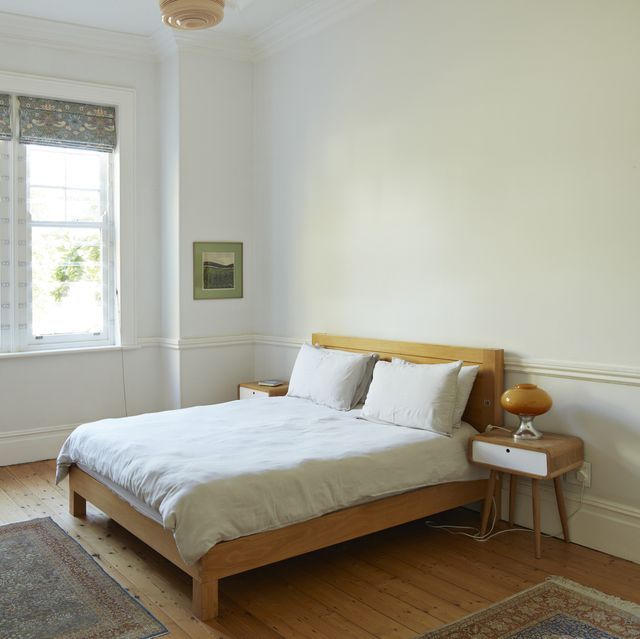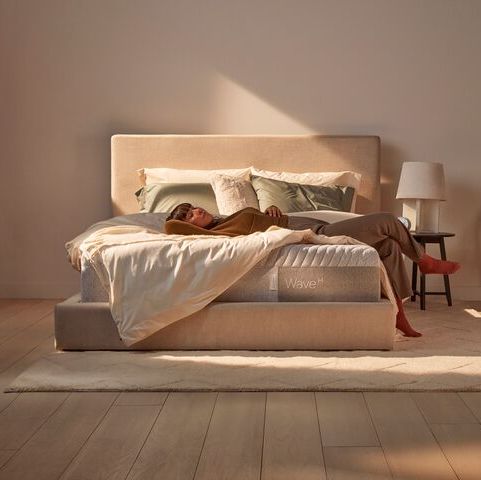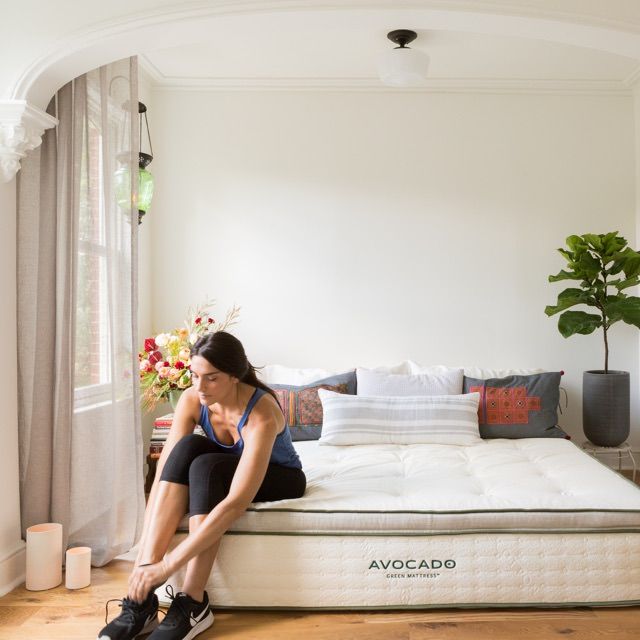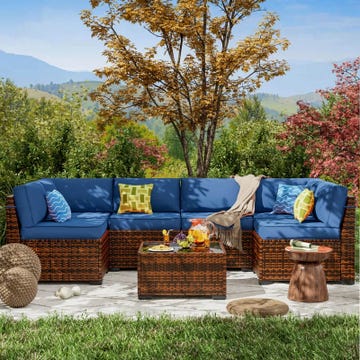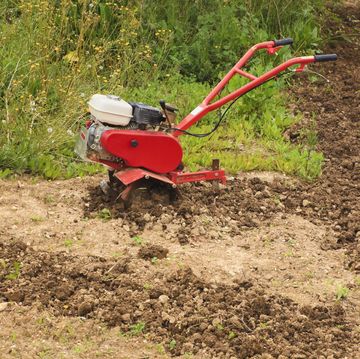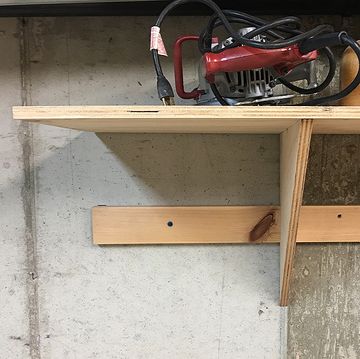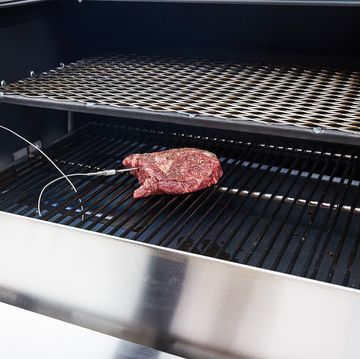Even the novice DIY-er can build a bed frame. That’s because beds are relatively simple structures, consisting of just five basic components: a headboard, footboard, two horizontal rails, and wooden slats that span the rails and support the box spring.
Plus, there’s no such thing as a typical DIY bed frame. You decide on the style, design, wood species, budget and type, and color of the finish. Regardless of whether you’re building a frame for a tiny twin bed or oversize California king, the construction process is essentially the same.
🛠 For more badass DIY projects, join Pop Mech Pro!
For those DIYers in need of a little extra guidance, there are plenty of places to get building plans for frames to fit any size mattress, and in many cases the plans are free.
You can find great bed-frame plans on sites like DIY Pete, Home Depot, The Spruce Crafts, or HomeLovr.
Before ordering a set of building plans, check the list of tools and materials required to DIY and build your bed frame. You don’t want to start the construction process only to discover that the plans call for a woodworking machine that you don’t own or the use of some exotic, hard-to-find wood species. Here are a few other important things to keep in mind:
Standard Bed Sizes
Here’s a list of the six most common sizes and dimensions of mattresses:
- Twin — 39” x 75”
- Twin XL — 39” x 80”
- Full — 54” x 75”
- Queen — 60” x 80”
- King — 76” x 80”
- California King — 72” x 84”
Note that these dimensions are for mattresses, not the bed frame. You must build the frame an inch or so wider and longer to comfortably accept the box spring and mattress. If you build the frame too small, friction can cause the wooden frame to rub right through the fabric on the box spring and mattress. Plus, a tight fit makes it much harder to change the sheets.
Material Choices
Bed frames can be built out of virtually any wood, including various species of softwoods and hardwoods. Hardwoods are stronger, more rigid and, not surprisingly, harder than softwoods.
If using softwood, such as pine or cedar, consider cutting the parts slightly thicker and wider to give the bed frame the necessary strength and rigidity. Plywood is fine for creating large panels in the headboard or footboard, but choose solid wood for all structural components.
Bed Height
The height of a bed is a point of contention in many homes. What’s comfortable to one person might be too high or too low for another. Measure the height of your box spring and mattress and then adjust the bed frame to produce the desired finished height.
The average bed height is about 25 inches off the floor, though many antique beds are as high as 36 inches and some contemporary platform beds are just 18 inches high. To determine if a bed is the proper height, sit on the edge of the mattress with your feet flat on the floor. If your knees are level with your hips, then the bed is the correct height. If your knees are significantly higher or lower than your hips then the bed is too low or too high. Of course, this becomes a more difficult calculation if your partner is much taller or shorter.
In some cases, the desired bed height can be attained by eliminating the box spring and building a platform bed. However, to provide proper support for the mattress, it’s important to either replace the wood slats with a thick plywood panel or leave the slats in place and lay a Bunkie Board on top. A Bunkie Board is designed to replace box springs on platform beds, trundles, and bunk beds. It’s only about two inches thick, but it provides plenty of support for the mattress. Bunkie boards run between $60 and $110, depending on bed size.
Construction Techniques
For maximum strength when building your own bed frame, use glue and screws to assemble bed-frame parts, but don’t forget that you’ve got to be able to disassemble the large frame components—headboard, footboard and rails—in order to fit the frame through the doorway and into the bedroom.
There are several ways to make the bed frame easy to break down and reassemble, but the easiest and strongest by far is to install steel bed-rail brackets. Each pair of brackets consists of two interlocking parts. One part is securely screwed to each end of both horizontal rails, and the other mating parts attach to the headboard and footboard. Then you simply slide the parts together to create strong, long-lasting joints, which easily come apart when needed. The great thing about using bed-rail brackets is that there’s no need to tediously cut tight-fitting mortise-and-tenon joints; the surface-mounted brackets are simply screwed in place.
Final Touches
Bed frames require a durable, easy-to-clean finish. For a natural finish, apply two coats of water-based polyurethane varnish, which will protect the wood without altering or hiding its natural color and texture. If you’d prefer to tint the wood’s color, apply a pigmented wood stain, followed by a polyurethane topcoat.
Paint is a very popular finish for bed frames, mostly because it comes in nearly unlimited colors, but it’s not as durable as polyurethane. If you decide to paint your bed frame, start with a coat of primer, followed by two topcoats of high-quality acrylic-latex paint in semigloss or satin sheen. These two sheens are easier to clean than flat paint, and less reflective than high gloss.
🛏 Our Top Rated Mattresses
Joe is a former carpenter and cabinetmaker who writes extensively about remodeling, woodworking, and tool techniques. He has written eight books and is a contributing editor to Popular Mechanics. He also appears on the Today’s Homeowner TV show, and co-hosts the weekly Today’s Homeowner Radio Show. Joe writes from his home in Roxbury, Connecticut.
